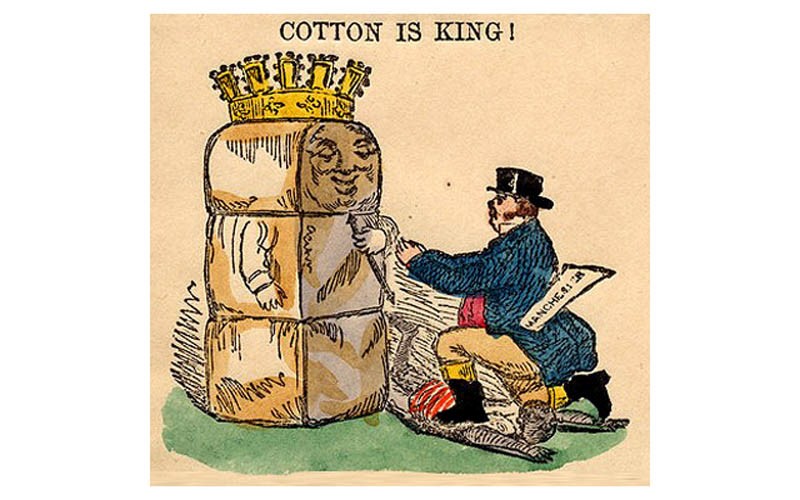4.13 The Society of the South in the Early Republic
3 min read•june 18, 2024
Robby May
Jillian Holbrook
AP US History 🇺🇸
454 resourcesSee Units
The Cotton Economy 🧵
Prior to the invention of the cotton gin, the process of separating the seeds from cotton fibers was extremely labor-intensive and time-consuming, making the production of cotton a relatively unprofitable venture. However, Eli Whitney's cotton gin revolutionized the cotton industry by separating the seeds from the fibers much faster and easier, which led to a dramatic increase in the production of cotton. Increased cotton production made it a much more profitable crop, which demanded more slave labor to cultivate and harvest the cotton. As a result, the cotton gin played a significant role in the expansion of slavery in the United States, as it made it more profitable to use slave labor to cultivate and harvest cotton.
As more Southern states began to grow cotton, cotton came to account for two-thirds of all US exports—feeding the textile mills in the North and Great Britain. King Cotton described the central role that the cotton industry played in the economy of the Southern United States. Cotton was the dominant cash crop in the South, and it was a major contributor to the region's wealth, prosperity, and regional identity.

Image Courtesy of Wikimedia
The phrase "King Cotton" highlighted the economic power and influence of the cotton industry, and it was often used by Southern politicians and leaders to justify the maintenance and expansion of the institution of slavery. Particularly, Southern leaders argued that the North's attempts to restrict the expansion of slavery and the Southern cotton industry were an attack on the South's economic well-being.
Overcultivation of cotton depleted arable land in the Southeast, which caused slaveholders to relocate their
plantations to more fertile lands west of the Appalachians, where the institution of slavery continued to grow and contribute to rising political tensions.
Southern Identity 👒
Most white Southerners did not actually own any slaves, and only less than 5% of the Southern population owned more than 20 slaves. The picture of plantation life in movies and the media was, in all actuality, a very small percentage of the population. Still, white supremacy and patriarchy were predominant in the Southern states, and Southern leaders painted slavery as part of the Southern way of life.
In addition to its history and culture, the Southern United States had a definitive social structure with a strong emphasis on honor, tradition, and community. The region also had a strong sense of regional pride, and many Southerners saw themselves as distinct from the rest of the country—values that later influenced secession.
Unlike the North, the Southerners did not try to push for education reforms. In most parts of the South, education was not a priority, and there were few resources available for schools, especially in rural areas. Many Southern states did not have mandatory education laws, and as a result, many children, particularly those from poorer families, did not receive any formal education. Resultantly, the illiteracy rates remained high in the South.
🎥 Watch: AP US History - Southern Society and Slavery
Browse Study Guides By Unit
🌽Unit 1 – Interactions North America, 1491-1607
🦃Unit 2 – Colonial Society, 1607-1754
🔫Unit 3 – Conflict & American Independence, 1754-1800
🐎Unit 4 – American Expansion, 1800-1848
💣Unit 5 – Civil War & Reconstruction, 1848-1877
🚂Unit 6 – Industrialization & the Gilded Age, 1865-1898
🌎Unit 7 – Conflict in the Early 20th Century, 1890-1945
🥶Unit 8 – The Postwar Period & Cold War, 1945-1980
📲Unit 9 – Entering Into the 21st Century, 1980-Present
📚Study Tools
🤔Exam Skills
👉🏼Subject Guides
📚AMSCO Notes

Fiveable
Resources
© 2025 Fiveable Inc. All rights reserved.